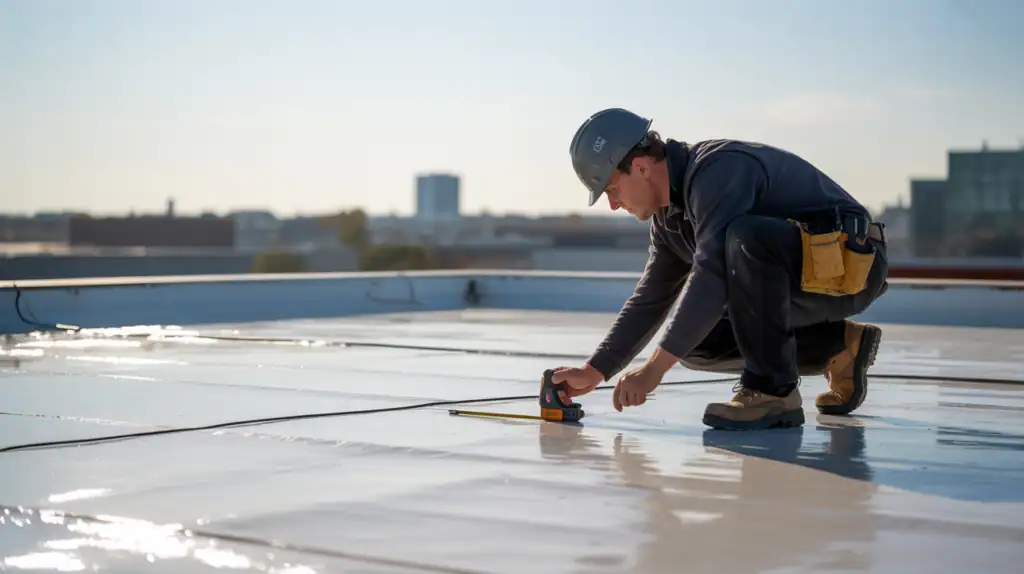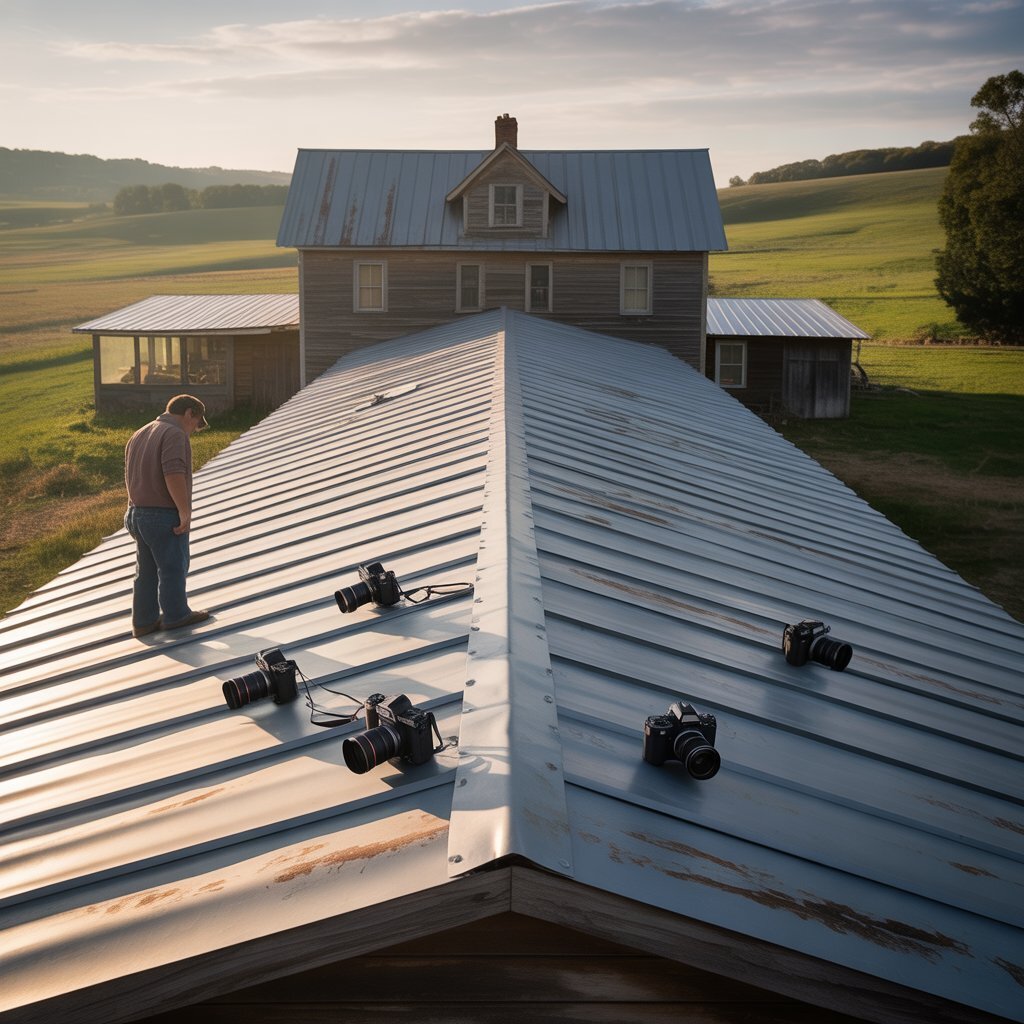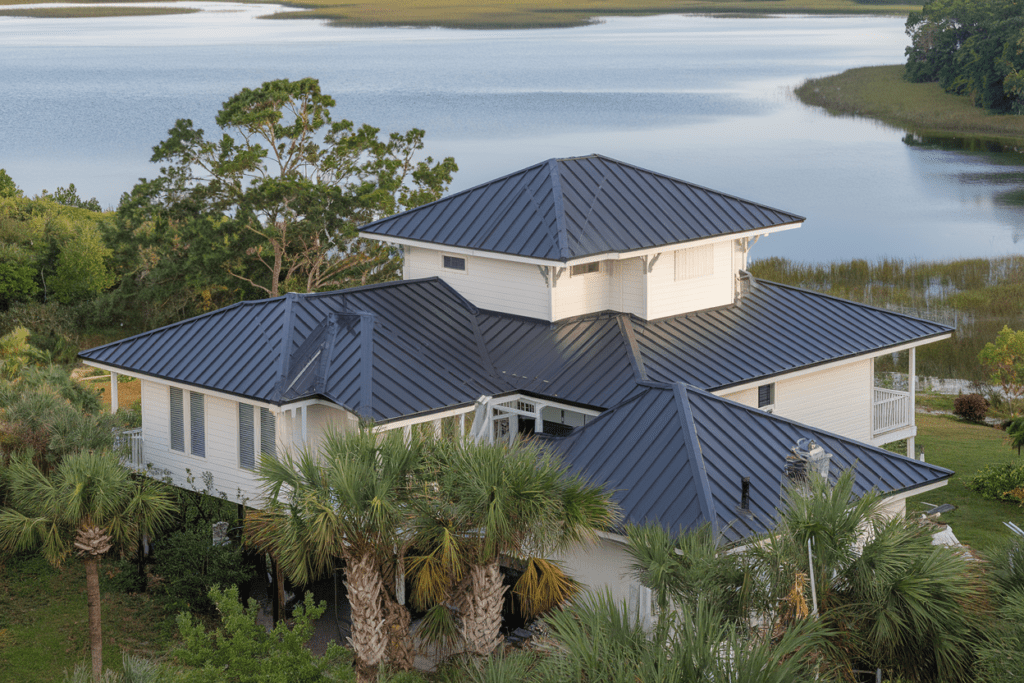You’re staring at water stains on your ceiling, wondering if it’s time to replace your roof. Or maybe you’re buying a new home and want to know what you’re getting into. Either way, you’re asking the right question: how long does a roof actually last?
The answer isn’t as simple as you might think. Roof lifespans range from 15 to 150 years, depending on several critical factors. Some roofs fail after just a decade, while others protect homes for over a century. Understanding what determines your roof’s lifespan can save you thousands of dollars and prevent major headaches down the road.
At Straight Forward Construction, we’ve seen roofs that should have lasted 30 years fail after 15, and others that have protected homes far longer than expected. The difference often comes down to seven key factors that most homeowners don’t fully understand.
What Determines How Long Your Roof Will Last?
Not all roofs are created equal. The material on your roof right now could last anywhere from 15 to 150 years, but that’s just the starting point. Weather conditions, maintenance habits, and installation quality can either extend your roof’s life by a decade or cut it short by half.
Here’s what really matters when it comes to roof longevity.
1. Roofing Material: Your Foundation for Longevity
The type of material covering your home is the biggest factor in determining lifespan. Here’s what you can expect from different materials:
| Material | Lifespan (Years) |
| Asphalt Shingles | 20-30 |
| Architectural Asphalt Shingles | 30 |
| Three-Tab Asphalt Shingles | 20 |
| Metal Roofing | 40-80 |
| Slate | 60-150 |
| Clay Tiles | 100+ |
| Copper | 70+ |
| EPDM Rubber | 15-25 |
| TPO Rubber | 7-20 |
| Wood | 40-50 |
| Flat Roofs | 15-30 |
Asphalt shingles are the most common choice in the U.S., lasting 20-30 years on average. They’re affordable and work well in most climates. Metal roofing is gaining popularity, especially in sunny regions, because it reflects heat and can last 40-80 years.
If you’re looking for a long-term investment, slate and clay tiles offer exceptional durability. Slate can protect your home for 60-150 years, while clay tiles can last over 100 years. However, these materials require proper structural support and professional installation by roofing experts in Davenport, FL.
2. Climate and Weather: Nature’s Impact on Your Roof
Weather conditions can make or break your roof’s lifespan. Extreme temperatures, heavy rain, high winds, and intense sunlight all take their toll over time.
In hot climates, UV rays cause asphalt shingles to deteriorate faster. The constant expansion and contraction from temperature changes can crack materials and loosen fasteners. Coastal areas face additional challenges from salt spray, which can cause corrosion in metal components.
Cold climates bring their own problems. Ice dams can form when snow melts and refreezes at the roof’s edge, causing water to back up under shingles. Freeze-thaw cycles can also crack tiles and damage flashing.
Storm damage is becoming more common. High winds can lift shingles, hail can create impact damage, and heavy rains can exploit any weaknesses in your roof system. The roofing industry has seen increased demand for repairs due to extreme weather events, with the market projected to reach $76.4 billion in 2025.
3. Maintenance and Care: The Secret to Extending Roof Life
Here’s something most homeowners don’t realize: regular maintenance can extend your roof’s life by 5-10 years. On the flip side, poor maintenance can shorten it by the same amount.
Essential maintenance tasks include:
- Annual inspections to catch problems early
- Cleaning gutters to prevent water backup
- Trimming overhanging branches to prevent damage
- Removing debris like leaves and moss
- Checking and repairing flashing around chimneys and vents
Poor ventilation is particularly damaging. Without adequate airflow, heat builds up in your attic, causing shingles to curl and deteriorate faster. Moisture problems can lead to mold growth and structural damage.
If you’re not comfortable doing these tasks yourself, consider working with a professional roofing company for regular maintenance. The investment pays off by extending your roof’s lifespan significantly.
4. Installation Quality: Why Professional Installation Matters
Poor installation is one of the fastest ways to shorten your roof’s life. Even the best materials won’t last if they’re not installed correctly.
Common installation problems include:
- Improper nailing that can cause shingles to blow off
- Missing or inadequate underlayment that allows water penetration
- Poor flashing installation around roof penetrations
- Inadequate ventilation that traps heat and moisture
The roofing industry has seen significant technological advances in 2025. 54% of contractors now use drones for inspections, providing more accurate assessments and reducing the need for potentially dangerous roof walks.
When choosing a contractor, look for:
- Proper licensing and insurance
- Experience with your specific roofing material
- Local references and reviews
- Warranties on both materials and workmanship
5. Ventilation: The Hidden Factor in Roof Longevity
Proper attic ventilation is crucial for roof health, yet it’s often overlooked. Without adequate airflow, your attic becomes a breeding ground for problems.
In summer, trapped heat can reach 150°F or higher, causing shingles to deteriorate rapidly. In winter, warm air from your living space can create ice dams and moisture problems.
Signs of poor ventilation include:
- Curling or cracked shingles
- Ice dams in winter
- High energy bills
- Moisture or mold in the attic
The solution involves both intake vents (usually in the soffit) and exhaust vents (at or near the ridge). This creates a natural airflow that keeps your attic temperature closer to the outside temperature.
6. Roof Slope and Design: How Architecture Affects Lifespan
Steeper roofs generally last longer because they shed water and snow more effectively. Water runs off quickly, reducing the chance of leaks and ice dam formation.
Flat roofs face unique challenges. With little to no slope, water can pool and find its way through even small imperfections. This is why flat roofs typically last 15-30 years compared to 20-30 years for sloped asphalt shingle roofs.
Complex roof designs with multiple peaks, valleys, and penetrations create more opportunities for problems. Each valley and flashing point is a potential failure spot that requires careful installation and maintenance.
7. Color and Reflectivity: The Surprising Impact on Roof Life
Lighter-colored roofs reflect more sunlight, potentially extending their lifespan in sunny climates. Dark roofs absorb more heat, which can accelerate deterioration in hot regions.
This is particularly important in places like San Diego, where intense sun exposure can shorten asphalt shingle life if not properly maintained. Metal roofs are gaining popularity in these areas because of their heat-reflective properties.
However, color isn’t just about heat reflection. In northern climates, darker roofs can help with snow melting, potentially reducing ice dam formation.
Current Industry Trends: What’s Changing in 2025
The roofing industry is experiencing significant changes that affect how we think about roof lifespan:
Technology is transforming roof care. Drone inspections are now used by 54% of contractors, with 27% planning to adopt them within the next two years. These high-resolution aerial surveys can spot problems early, potentially extending roof life through timely repairs.
AI and predictive analytics are becoming standard tools. Some companies now use artificial intelligence to analyze roof conditions and predict when maintenance will be needed, reducing the cost of frequent inspections.
Smart roofing systems are emerging, with integrated solar panels and monitoring systems that can alert homeowners to potential problems before they become serious.
Sustainability is driving material choices. Homeowners are increasingly interested in energy-efficient designs and green materials that offer both durability and environmental benefits.
When to Replace vs. Repair Your Roof
Knowing when to repair versus replace can save you thousands. Here are the key indicators:
Consider repairs if:
- Your roof is less than 15 years old
- Damage is localized to a small area
- Only a few shingles are missing or damaged
- The roof structure is sound
Consider replacement if:
- Your roof is approaching its expected lifespan
- You’re finding multiple leaks
- Shingles are curling, cracking, or losing granules extensively
- Energy bills are rising due to poor insulation
The cost factor is significant. While roof replacement can be expensive, continuing to patch an aging roof often costs more in the long run. Professional assessment can help you make the right decision.
The Real Cost of Poor Roof Maintenance
Approximately 38% of U.S. homes have roofs rated as “moderate” or “poor” – that’s over 40 million homes vulnerable to leaks, storm damage, or structural failure. Many have outdated materials that don’t meet modern safety codes.
Poor roof condition doesn’t just mean potential leaks. It can lead to:
- Higher energy bills from poor insulation
- Interior damage from water infiltration
- Structural problems if left unchecked
- Decreased home value when it’s time to sell
Regular professional inspections can catch problems early when they’re still affordable to fix. If you’re concerned about your roof’s condition, consider having it evaluated by qualified roofing company in Brandon, Auburndale, Tampa and Plant City who can assess both current problems and future needs.
Protect Your Investment: Take Action Today
Your roof is one of your home’s most important systems, and understanding what affects its lifespan helps you make informed decisions. Whether you’re dealing with an aging roof or planning for the future, the seven factors we’ve covered will determine how long your roof protects your home.
Don’t wait for problems to become emergencies. Regular maintenance, quality installation, and timely repairs can extend your roof’s life significantly. If you’re unsure about your roof’s condition or need professional guidance, our team at Straight Forward Construction is here to help. We provide honest assessments and quality workmanship that helps your roof reach its full potential lifespan.
Frequently Asked Questions
How often should I have my roof inspected? We recommend annual inspections, ideally in spring or fall. After severe weather events, it’s wise to have a professional check for damage even if you don’t see obvious problems from the ground.
Can I extend my roof’s life beyond its expected lifespan? Yes, with proper maintenance and care, many roofs exceed their expected lifespans. Regular cleaning, prompt repairs, and adequate ventilation can add 5-10 years to your roof’s life.
What are the warning signs that my roof needs replacement? Look for widespread shingle damage, frequent leaks, sagging areas, or granules accumulating in gutters. If your roof is approaching 20-25 years old and showing multiple problems, replacement might be more cost-effective than continued repairs.
Does roof color really affect lifespan? Yes, especially in hot climates. Lighter colors reflect more heat, reducing thermal stress on roofing materials. However, the effect varies by material and climate conditions.
How do I choose the right roofing material for longevity? Consider your climate, budget, and home structure. While slate and clay tiles last longest, they require strong structural support. Metal roofing offers excellent durability and energy efficiency. Asphalt shingles provide good value for most situations.
What’s the most important factor in roof longevity? While material choice sets the baseline, installation quality and maintenance have the biggest impact on whether your roof reaches its full potential lifespan. Poor installation can cut even the best materials’ life in half.
Are smart roofing systems worth the investment? Smart systems with monitoring capabilities can help catch problems early, potentially extending roof life. However, they’re still emerging technology, so consider your specific needs and budget when making this decision.





